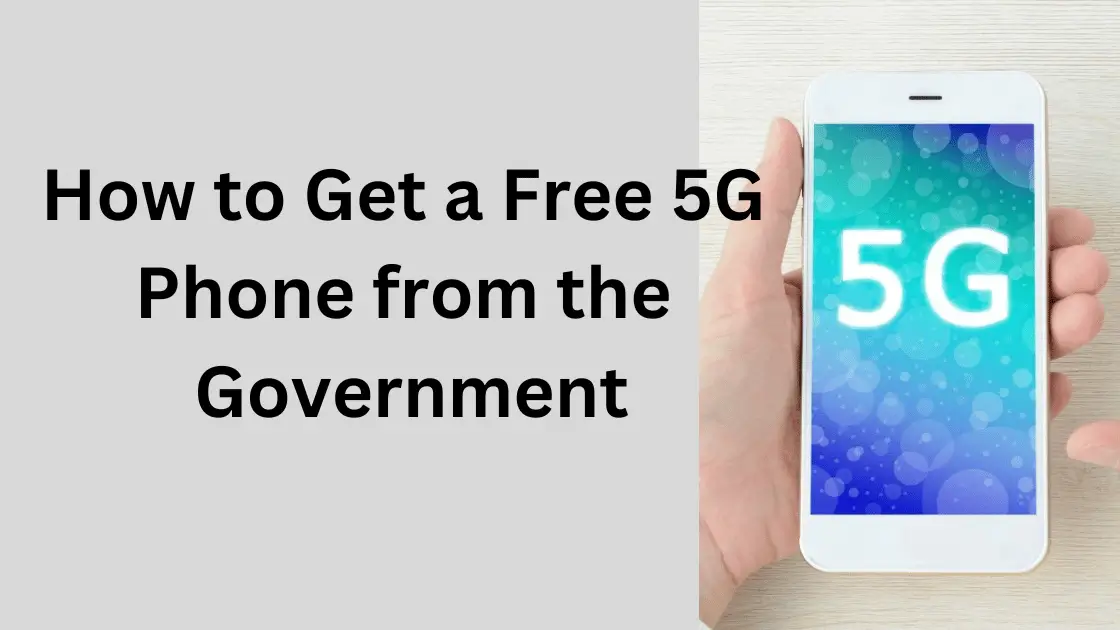Wi-Fi is considered a fundamental human right, as declared by the UN Human Rights Council in 2016. In the midst of the ongoing technological revolution, the lack of proper tools can lead to exclusion. Fortunately, the US government is taking steps to address this issue, offering free 5G phones to those who might otherwise struggle to afford them.
Since the 1980s, federal agencies have prioritized phone access, making communication services, including the latest mobile phones, more accessible. Today’s smartphones go beyond basic calling functions, empowering users with features such as photography, information access, and processing power surpassing that of the computers that landed humans on the moon.
For those facing financial challenges in obtaining a modern smartphone, various government programs provide a solution. These initiatives aim to bridge the gap and ensure that the benefits of technological advancement are available to all, irrespective of economic circumstances.
In the following sections, we’ll delve into these government programs, outlining the avenues available for obtaining a free 5G phone. These initiatives not only address immediate financial constraints but also contribute to a future where technological empowerment is universally shared.
What Government Program Offers Free 5G Phones?
The Federal Communications Commission (FCC) established the Lifeline Assistance Program in 1985 with the primary objective of enhancing the affordability of communication services for low-income households. The FCC emphasizes the importance of universal access to phone services, citing the opportunity and security they bring, connecting individuals to jobs, family, and emergency services.
Reflecting its mission, the Lifeline Assistance Program had a substantial budget of $2.385 billion in 2020, with the potential for an increase if over 90% of the budget is utilized. As of December 1, 2021, the program offers a comprehensive package, including a minimum of 1,000 mobile voice minutes, 4.5 GB of mobile broadband, and $5.25 in voice support. Moreover, the program extends its support to home internet, providing a minimum of 25mbps download speed, 3mbps upload speed, and $9.25 in broadband support per month.
While some may confuse the Lifeline Assistance Program with the Affordable Connectivity Program (ACP), it’s crucial to note that the ACP exclusively focuses on assisting with home internet. The ACP offers up to $30 per month for broadband services and $75 for eligible households on tribal lands. Notably, it even provides a $100 discount on laptops, desktops, and tablets for eligible households contributing between $10 and $50 towards the purchase.
Additionally, state and local governments run programs that offer free phones. However, potential recipients should conduct thorough research, considering that these programs may not necessarily provide 5G phones, and their eligibility criteria may differ from federal programs.
Participating in these initiatives can be a lifeline for individuals struggling to afford a modern smartphone. Furthermore, it contributes to the broader goal of ensuring that more Americans have access to the evolving 5G network, supporting the development of critical infrastructure.
Eligibility Criteria for Free 5G Phones through the Lifeline Program
To qualify for a free 5G phone from the government via the Lifeline Program, specific eligibility criteria must be met. The household income should be at or below 135% of the federal poverty guidelines, making individuals eligible for participation in any of the following programs:
- Supplemental Nutrition Assistance Program (SNAP)
- Supplemental Security Income (SSI)
- Medicaid
- Federal Public Housing Assistance
- Veterans Pension and Survivors Benefit Programs
Additionally, there are Tribal-specific programs that render a household eligible:
- Bureau of Indian Affairs General Assistance
- Tribally-Administered Temporary Assistance for Needy Families (TTANF)
- Food Distribution Program on Indian Reservations (FDPIR)
- Head Start
It’s essential to note that several programs were previously on the eligibility list but were removed by the FCC as of December 2016. These include:
- National School Lunch Program
- Temporary Assistance for Needy Families
- Low-Income Home Energy Assistance Program
- State-created criteria
Importantly, an eligible household can only receive one Lifeline discount, which can be applied to either a wireline or a wireless service, not both. The FCC emphasizes that households with more than one Lifeline service must choose one provider and contact the other to de-enroll.
How to Apply for a Free 5G Phone through the Lifeline Program
If you meet the eligibility criteria outlined above and are seeking to obtain a free 5G phone, follow these steps to apply:
- Choose a Participating Service Provider:
- Identify a service provider that participates in the Lifeline Program. Providers vary by location, and you can use the search tool on the Lifeline site to find options in your area.
- Check with your current provider, as they may offer the Lifeline benefit even if the search tool does not list all providers. Confirm if your existing service can be applied to the Lifeline benefit.
- Application to the Lifeline Program:
- Once you’ve selected a service provider, proceed to apply to the Lifeline Program. Applications can be submitted by mail, phone, through your internet company, or online.
- Provide personal information during the application process, including your name, birthday, last 4 digits of your social security or tribal identification number, and home address.
- Documentation for Eligibility:
- The application process may require documentation to verify eligibility. The necessity of this step depends on the provider and state requirements.
- If required, be prepared to submit documents proving your income level or enrollment in one of the government assistance programs mentioned in the eligibility criteria.
- Await Approval:
- Once you’ve completed the application and submitted all necessary paperwork, you will need to wait for the approval process.
- If your chosen service provider approves your application, you can expect to receive your free 5G phone along with a monthly allocation of free minutes and texts.
By following these steps, you can navigate the application process for the Lifeline Program and avail yourself of the benefits, ensuring that essential communication services, including a 5G phone, become accessible to those in need.
Available Free 5G Phone Models through the Lifeline Program
The selection of free 5G phone models through the Lifeline Program is contingent on your service provider, state, and the availability of specific models. While your provider might not disclose the model in advance, common 5G models that participants might receive include:
- Samsung Galaxy S21 Ultra
- Samsung Galaxy A32
- Samsung Galaxy A52
- Samsung Galaxy A14
- OnePlus Nord 200 5G
- OnePlus 9 Pro
- TCL 4X 5G
- TCL Revvl 5G
- Google Pixel 6 Pro
- Motorola G 5G
- Motorola G Stylus 5G
- Apple iPhone 13 Mini
- Apple iPhone 13 Pro
- Apple iPhone 13 Pro Max
While the specific phone model you receive may be limited in choice, the government assures that the phones provided meet a minimum quality standard. The FCC, in 2016, mandated that devices offered by providers must be compatible with Wi-Fi. Furthermore, as of 2023, 65% of these devices must have hotspot functions, with this percentage increasing to 75% by 2025.
Service Providers Offering Free 5G Phones through the Lifeline Program
The availability of free 5G phones through the Lifeline Program varies by state, and the exact list of service providers may differ. However, some commonly recognized carriers nationwide that participate in the Lifeline Program include:
- Safelink Wireless
- Q Link Wireless
- Life Wireless
- Assurance Wireless
- Reachout Wireless
- Access Wireless
To obtain the most accurate information regarding available service providers in your state, refer to the Lifeline site or contact the program directly. It’s important to note that not all service providers offering Lifeline benefits necessarily provide free 5G phones.
For instance, Verizon offers a discount of up to $9.25 per month on phone service through Lifeline but provides free 5G phones only to customers who trade in a functioning mobile device. Similar trade-in deals for non-Lifeline customers can be found at AT&T and T-Mobile.
How to Choose the Right Service Provider for Lifeline Benefits
Selecting the most suitable service provider for Lifeline benefits involves careful research and comparison. To make an informed decision, consider the following factors:
- Lifeline Acceptance:
- Verify which providers in your state accept Lifeline benefits. This information can be found on the Lifeline site or by contacting the program directly.
- Coverage Quality:
- Assess the coverage quality offered by each provider. Look for a network that provides reliable coverage in your area and areas you frequent.
- Available Models:
- Check the 5G phone models offered by each provider. Evaluate whether they meet your preferences and needs.
- Customer Service:
- Research the customer service reputation of each provider. Look for reviews and experiences from other Lifeline customers to gauge the level of customer support.
Here’s a comparison table of some top providers:
| Wireless Service Provider | Common 5G Models Offered | Monthly Plan Features |
| Safelink | TCL 4X, Samsung Galaxy A32, OnePlus Nord 200, Nokia G300, Samsung Galaxy A14, Motorola G | Free unlimited talk, text, and data. Free 10GB hotspot. |
| Q Link | Motorola Moto G, Samsung Galaxy A32 | Free 1,000 call minutes, unlimited texts, and 1-2GB of data. |
| Life | It varies | Free 1,000 minutes, unlimited texts, and MMS. 3GB of data. |
| Assurance | Wingtech Revvl V+, Motorola G Pure | Free unlimited texts, minutes, and data. Free 10GB hotspot. |
| Reachout | It varies | Free unlimited talk and text. Free minutes for international calls. |
| Access | Samsung Galaxy Note 20, Samsung Galaxy A32, TCL Revvl, Wingtech Revvl V+, OnePlus Nord N10, Samsung Galaxy A14, Samsung Galaxy A53 | Free unlimited talk, text, and data. |
To start your research, check service providers in your state and read online reviews from other Lifeline customers. These firsthand accounts can provide valuable insights into the experiences of individuals with the providers you are considering.
Happy searching! With the right provider, you’ll soon be able to connect to your heart’s desire.
You May Also Read: How to Cancel QLink Wireless




